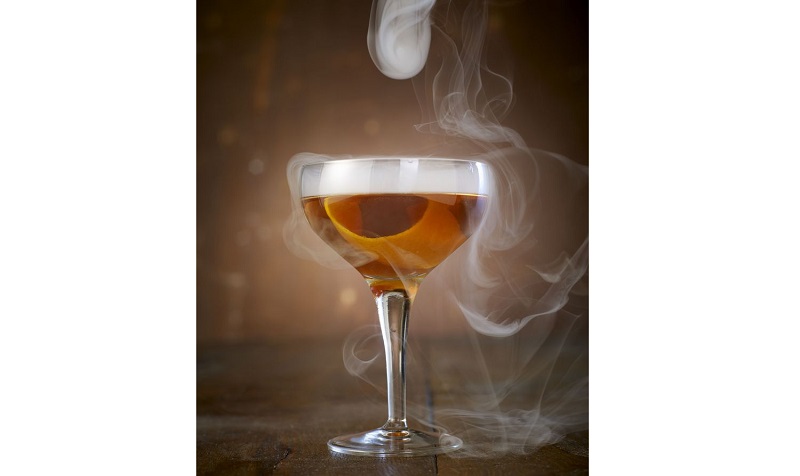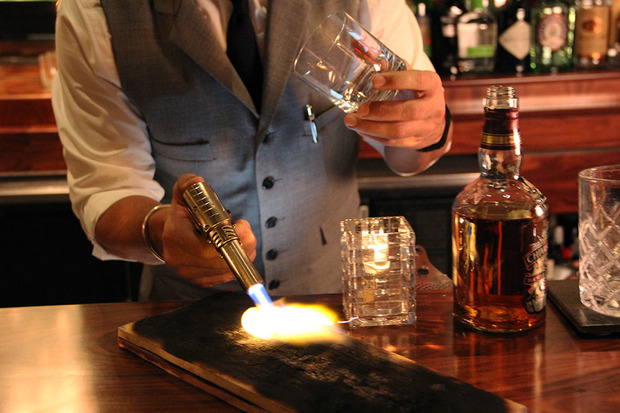Did you ever happen to walk inside a bar and be enveloped by a wave of smoke? What could seem as a novelty in the bartending world, is a process that has been used for ages, as a method of conservation or to flavor foods.

Referring to the flavoring, large part of the work is done by the wood used, that, we remember, is made of cellulose and hemicellulose bound together by lignin. During the combustion these components are transformed into other compounds and some of those are responsible for the aroma awarded to the food or drink. The sugars contained in the cellulose and hemicellulose are, while burning, transformed into molecules, that can emit buttery, fruity or flowery notes, while the vanilla flavor is derived from the combustion of lignin.
Fundamental are the types of wood used and the combustion temperature. The types of wood recognized as the most suitable for smoking are beech, cherry, orange, apple and mulberry. Oak, walnut and fruit trees produce a balanced smoking, while the resin rich woods, such as pine, spruce and conifer, produce a more pungent smoking.
In the world of beverages the smoking is a fairly widespread practice: in addition to the already mentioned woods, it is not unusual, for us bartenders, to set on fire spices (like cinnamon), flowers and dried plants (rosemary for example) and, for the more daring, tobacco (flavored on, for pipes, or a small piece of cigar). However, do not think that setting fire to an aromatic substance is enough to give a drink a good taste. It is difficult to add a pleasant flavor to a cocktail and this technique requires also the use of special tools.
One could use the smoking gun: certainly very choreographic, but very often it doesn’t give the drink a uniform and pleasant smoke, it rather adds a very captivating visual impact.

A certainly more immediate alternative could be the use of peaty distillates, like Whisky or Mezcal, with a distinctive character of smoke/peat, sprayed (following right doses) over the drink through a perfume sprayer.
It is also possible to put the drink inside a bell jar filled with smoke and leaving it in contact with the gas for a few tens of seconds.
Needed to be mentioned, is that during the combustion, also harmful substances like benzopyrene and benzanthracene are emitted. However, in order to not give up on this technique, there are methods under study capable of limiting the generation of this substances as much as possible.
Now you just have to look out for your favorite bartender, give the first centimeter of the foot of your favorite cigar up (by using your cutter) and trying it paired with the cocktail that best expresses its characteristics with the smoke.

